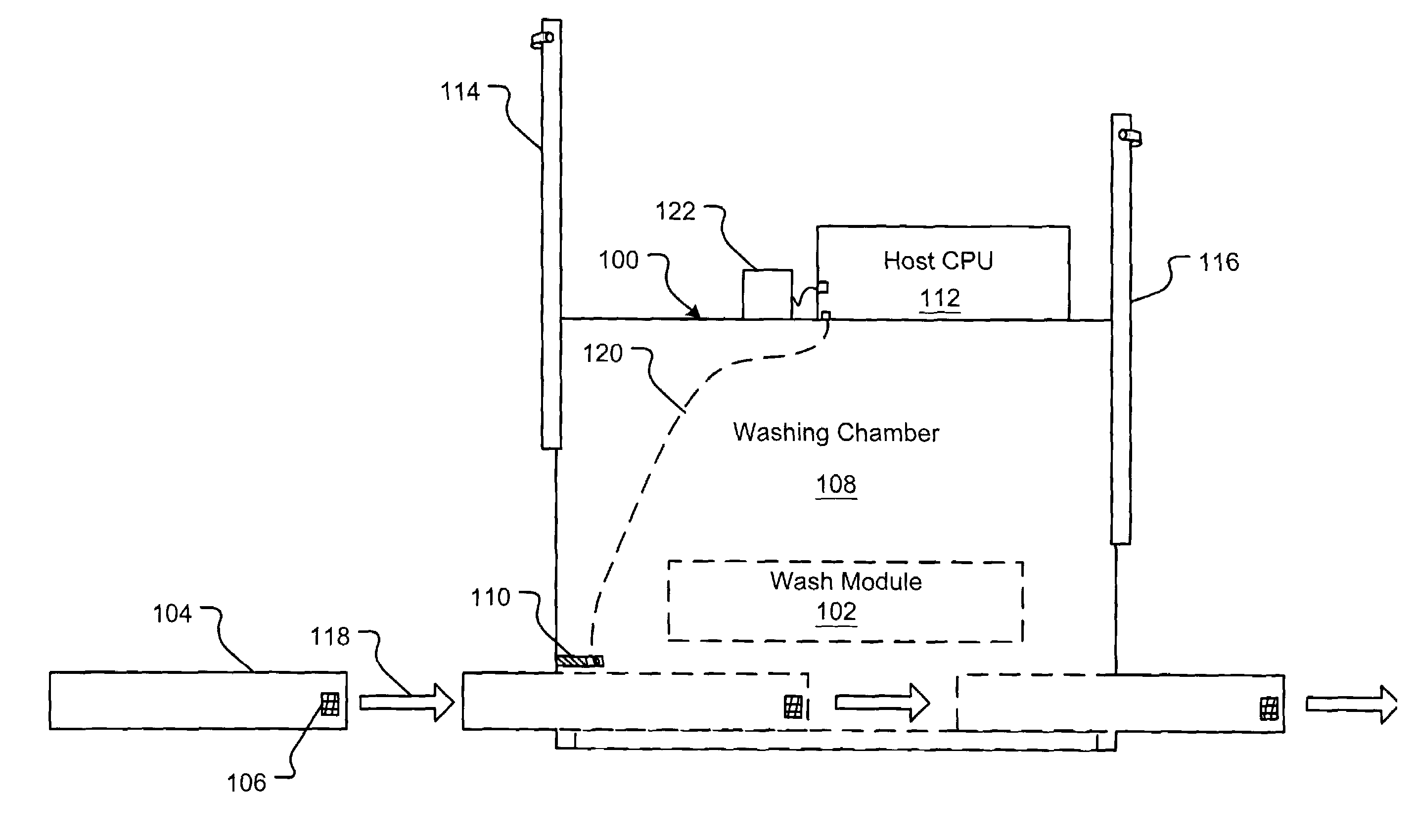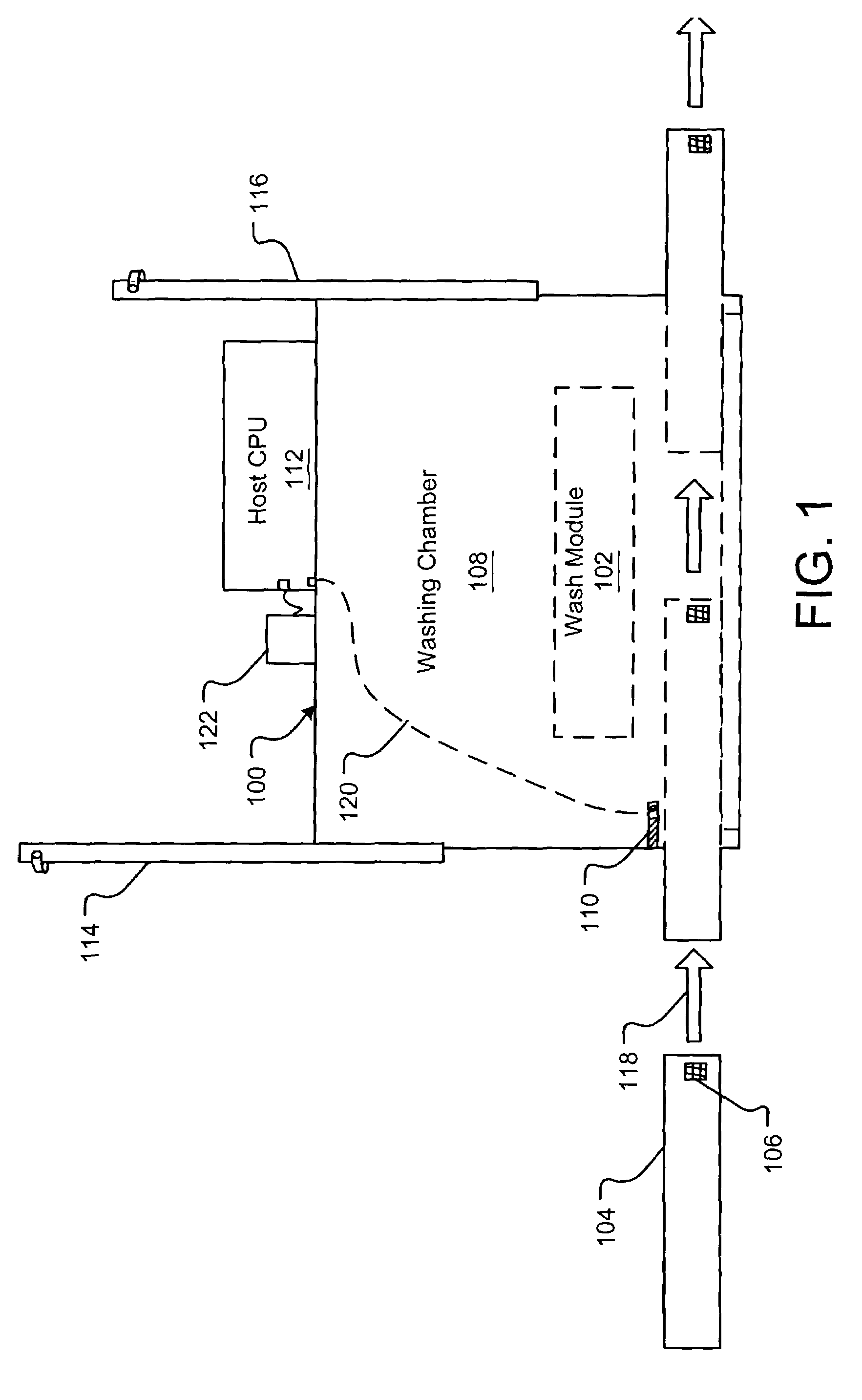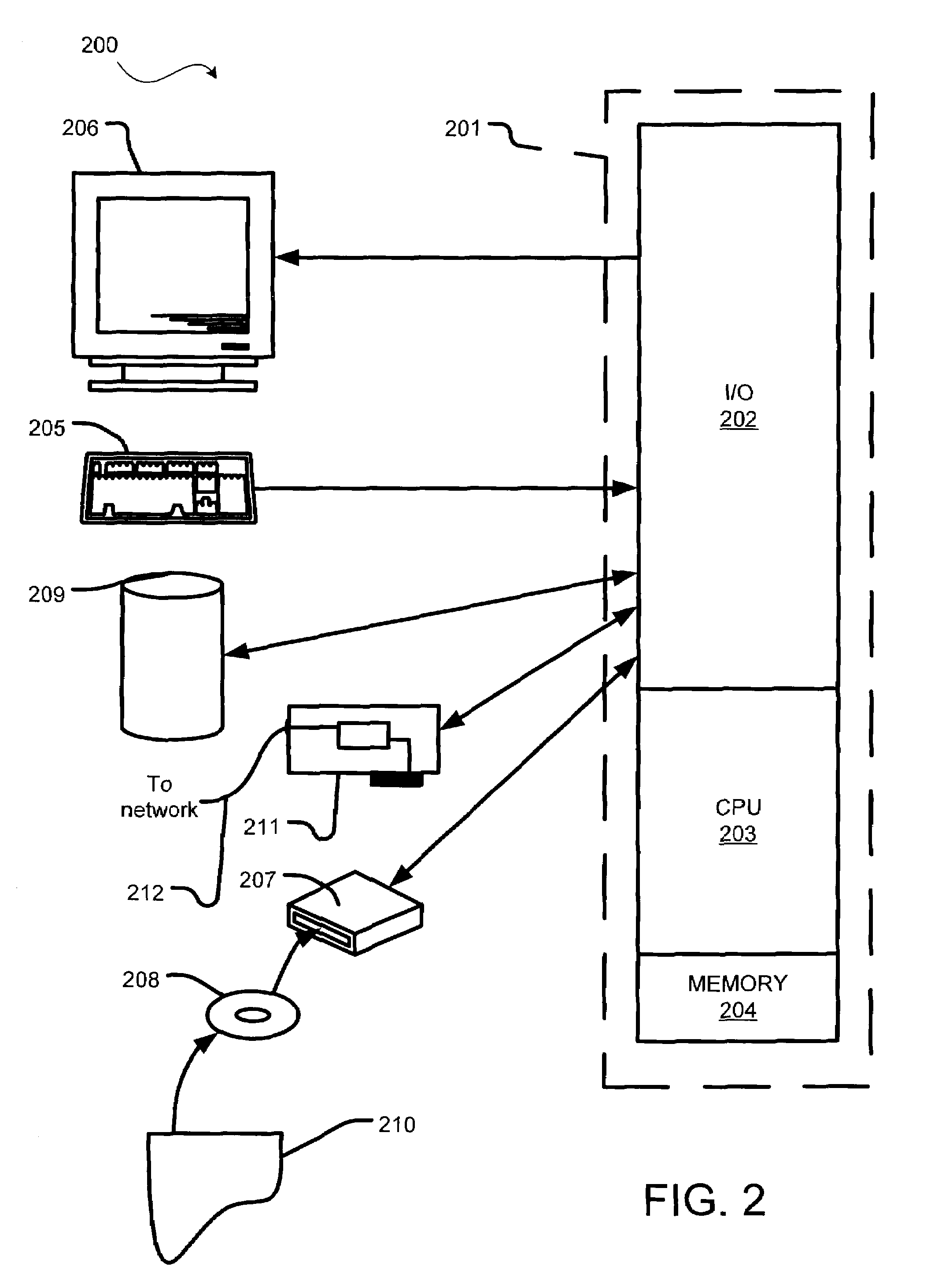Monitoring performance of a warewasher
a technology for monitoring the performance of a warewasher and a counter, which is applied in the direction of cleaning equipment, tableware washing/rinsing machine details, instruments, etc., can solve the problems of extreme waste of time, inaccurate count calculation of a counter, and low estimation typ
- Summary
- Abstract
- Description
- Claims
- Application Information
AI Technical Summary
Benefits of technology
Problems solved by technology
Method used
Image
Examples
Embodiment Construction
[0018]The present invention and its various embodiments are described in detail below with reference to the figures. When referring to the figures, like structures and elements shown throughout are indicated with like reference numerals.
[0019]The present invention provides a method and system for monitoring operations of a cleaning apparatus to collect information associated with article racks sent through the apparatus. The cleaning apparatus is described below as being a commercial dishwasher, which is also referred to as a warewasher. However, it should be appreciated that the cleaning apparatus may be any type of utility device that cleans articles provided thereto on racks.
[0020]Referring now to FIG. 1, a warewasher 100 is shown in accordance with an embodiment of the present invention. The warewasher 100 is used to clean all types of dishware and kitchen utensils, such as, without limitation, pots and pans used in restaurants and bakeries. Objects washed by the warewasher are ...
PUM
 Login to View More
Login to View More Abstract
Description
Claims
Application Information
 Login to View More
Login to View More - R&D
- Intellectual Property
- Life Sciences
- Materials
- Tech Scout
- Unparalleled Data Quality
- Higher Quality Content
- 60% Fewer Hallucinations
Browse by: Latest US Patents, China's latest patents, Technical Efficacy Thesaurus, Application Domain, Technology Topic, Popular Technical Reports.
© 2025 PatSnap. All rights reserved.Legal|Privacy policy|Modern Slavery Act Transparency Statement|Sitemap|About US| Contact US: help@patsnap.com



